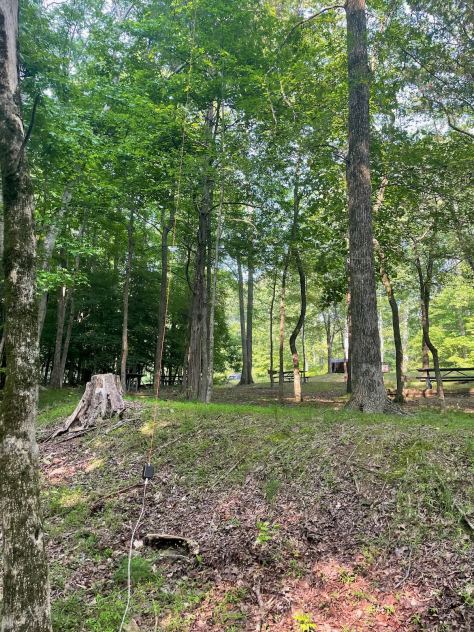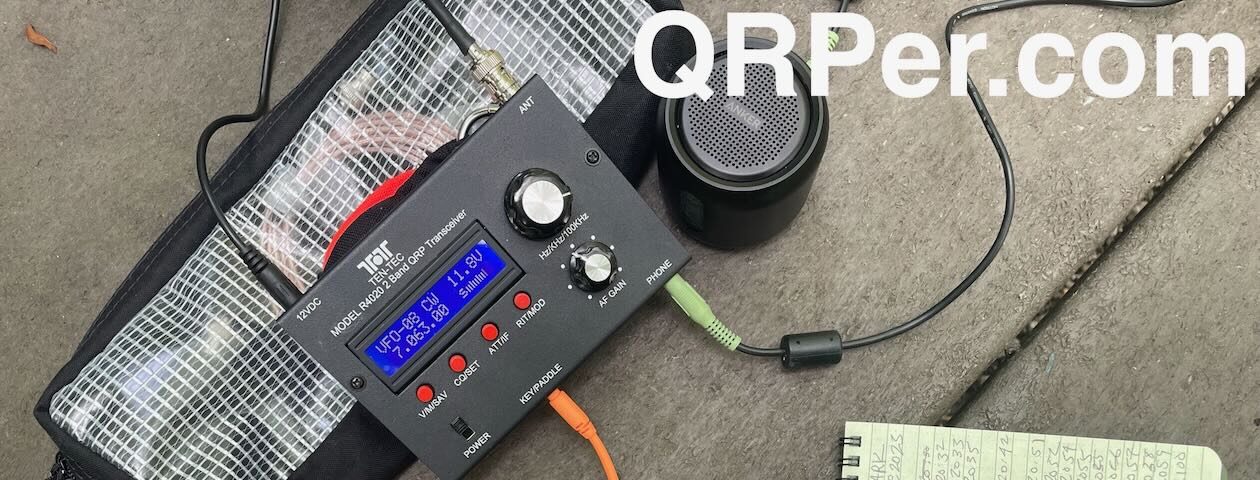Many thanks to Teri (KO4WFP) for the following guest post:

A New Skill and Antenna Leads to Success at Wormsloe K-3725
by Teri (KO4WFP)
If you read my field report for Wheeler NWR K-0161, the trap dipole I used vastly outperformed the AX1 that particular day. I originally opted for the AX1 because, for my upcoming trip to Nova Scotia, my family and I will fly so space for ham equipment is limited. But the Wheeler activation convinced me to add an end-fed antenna to my kit for the trip, something several hams recommended. I chose the Tufteln EFRW QRP antenna.

Ham radio has taught me many things, one of them being I tend to procrastinate when I feel intimidated by a project. Case in point – the Pacific Antenna 2040 trap dipole I used in my last activation. My local radio club recommended it for POTA. (They were correct by the way – that antenna works well!) The project sat on my shelf for nine months before I got up the courage to work on it.
The same thing happened when I ordered a Morserino kit. I knew it would be a great learning opportunity due to my limited experience with electronics. Well, it took me three months to get up the courage to tackle that project. So, for whatever reason, getting antennas into trees fell into the same category in my mind. Now, having to use an end-fed antenna for POTA, I needed to learn the skill but had no idea where to begin.
Thankfully Thomas came to the rescue! I found his July 3rd, 2022 post discussing the various iterations of throwing equipment he used and on what he settled. Soon I acquired a Weaver 10 oz. weight, a spool of Marlow 2mm throw line, and a Tom Bihn small travel tray.


I next found Thomas’ Sept. 8th, 2020 post as to how to prepare the line (you tie it to a tree and tug hard on it several times to remove any kinks in the line), flake the line into a cube or bag, tie a slip knot to attach the weight, and then use one of two techniques for launching the line over a branch.

In my HOA, there is a wooded area that offered privacy and the perfect live oak branch, about 15 feet high, for my initial practice session. I opted for what is called the “granny toss”. Heck, if it was good enough for the arborist whose video Thomas featured in his September 8th post, it was good enough for me, no matter how ridiculous it might look. And guess what? Success on the third throw! OK. This skill was not proving to be nearly as daunting as I had assumed.
Now it was time to put this newly-acquired skill to use. Tuesday June 13th, I chose to return to Butter Bean Beach at Wormsloe (K-3725), partially to further my kilo pursuit for this park but also because I knew hams from my local club had used end-fed antennas there.
The drive to Butter Bean Beach from my home is a favorite. I take Ferguson Avenue which has a live oak canopy stretched over the road. The trees are dripping with Spanish moss and look like old Grand Dames swathed in grey boas.

Along the road is Bethesda Academy which used to be an orphanage for boys. The institution was established in 1740 by evangelist George Whitefield. Today Bethesda is a private boarding and day school for boys. The academy has a dairy and I often slow down to look at the cows with their calves in the pastures. You never know what you might see – I’ve actually pulled over to watch a newborn calf take its first steps. (How cool is that!) Today the cows and their calves were lounging in the afternoon shade of one of those Grand Dames. Continue reading A New Skill and Antenna Leads to Success at Wormsloe K-3725 →
 Somedays, I just need to stretch my legs with a good hike and Tuesday (June 6, 2023) was one of those days!
Somedays, I just need to stretch my legs with a good hike and Tuesday (June 6, 2023) was one of those days! Thus, I ditched the idea of hitting both parks and chose to activate only Lake Norman because it has an amazing six mile “Lakeshore” loop trail that I love.
Thus, I ditched the idea of hitting both parks and chose to activate only Lake Norman because it has an amazing six mile “Lakeshore” loop trail that I love. The trail follows the winding lake shore and is a very easy hike. I’m used to taking more mountainous trails, so to hike along a lakeshore is just pure fun.
The trail follows the winding lake shore and is a very easy hike. I’m used to taking more mountainous trails, so to hike along a lakeshore is just pure fun.
 I grabbed my radio gear from the car and found a picnic table under the shade of trees. Continue reading Lake Norman: An amazing hike followed by a POTA activation with the TEN-TEC R4020
I grabbed my radio gear from the car and found a picnic table under the shade of trees. Continue reading Lake Norman: An amazing hike followed by a POTA activation with the TEN-TEC R4020 























































